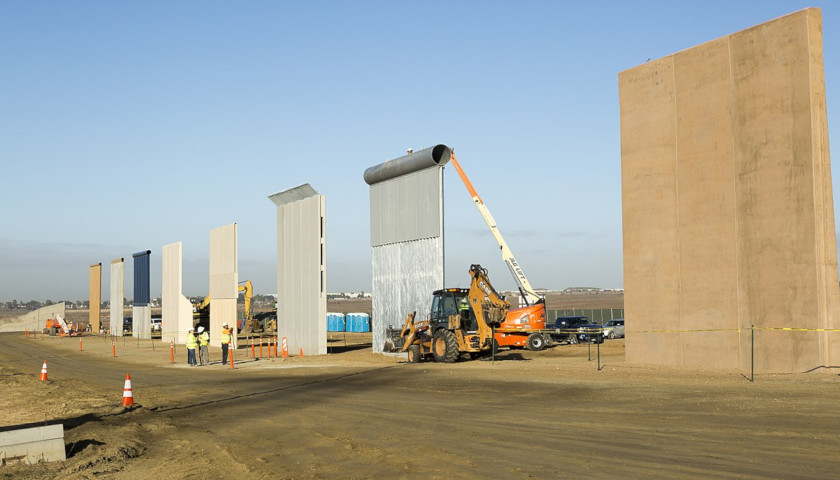by Robert Romano
Brick by brick, figuratively speaking, with a serious assist from the Supreme Court ruling that reprogramming $2.5 billion of counter-narcotics monies may be used, Donald Trump is fulfilling his promise to get the southern border wall built.
In a 5 to 4 decision to stay an injunction by a federal district court that sought to slow down usage of the funds from the Department of Defense, the nation’s highest court said, “the Government has made a sufficient showing at this stage that the plaintiffs have no cause of action to obtain review of the Acting Secretary’s compliance with Section 8005” of the Department of Defense and Labor, Health and Human Services, and Education Appropriations Act, 2019.
That’s because the law is clear. It states in part “Upon determination by the Secretary of Defense that such action is necessary in the national interest, he may, with the approval of the Office of Management and Budget, transfer not to exceed $4,000,000,000 of working capital funds of the Department of Defense or funds made available in this Act to the Department of Defense for military functions (except military construction) between such appropriations or funds or any subdivision thereof, to be merged with and to be available for the same purposes, and for the same time period, as the appropriation or fund to which transferred…”
The $2.5 billion specific to the court case were to be used for enforcing 10 U.S.C. Section 284(B)(7), entitled, “Support for counterdrug activities and activities to counter transnational organized crime,” which explicitly authorizes “Construction of roads and fences … to block drug smuggling corridors across international boundaries of the United States.”
In other words, the case was such a slam dunk for the federal government that Supreme Court majority chuckled it out of court stating there was simply “no cause of action” to enjoin the spending of the monies. The plaintiffs lacked standing to bring the case in the first place. The outcome is that the money will be spent and Trump will get some new wall built.
It also likely means that the legal cases for the rest of the $5.6 billion Trump reprogrammed from military construction and other funds will similarly be upheld. The White House had also identified “[a]bout $601 million from the Treasury Forfeiture Fund… [and u]p to $3.6 billion reallocated from Department of Defense military construction projects under the President’s declaration of a national emergency (Title 10 United States Code, section 2808)…” that is reprogrammable under federal law.
That comes atop the $1.6 billion that Congress passed in 2018 for replacing existing fencing with new steel barriers and the $1.375 billion in 2019 for more steel barriers that was approved after the partial government shutdown earlier this year.
It also comes after Congress voted for another $4.5 billion the Trump administration had requested to deal with the humanitarian crisis on the border.
While some critics are moaning about the decision, given the law it was all but inevitable. House Speaker Nancy Pelosi complained on Twitter, “This evening’s Supreme Court ruling allowing @realDonaldTrump to steal military funds to spend on a wasteful, ineffective border wall rejected by Congress is deeply flawed. Our Founders designed a democracy governed by the people — not a monarchy.”
Here’s the best part: Democrats voted for all of it. Specifically, the National Defense Authorization Act of 2019, the bill which allowed the $2.5 billion for counter-narcotics barriers to be built, passed with 185 Democrats voting in the affirmative in the House. Every Democrat except for Sen. Bernie Sanders voted for it in the Senate. Similarly, overwhelming Democratic majorities voted for all the aforementioned bills as well.
Meaning, in 2020 when Democrats are promising to tear down Trump’s wall, which is getting built — the Army Corps of Engineers reports about 450 miles will be completed by the end of 2020 — they’ll have to first explain why they voted for it in the first place.
They built that.
– – –
Robert Romano is the Vice President of Public Policy at Americans for Limited Government.




